I’d been optimistic. Maybe, I thought, ash from the fire, and subsequent flooding, didn’t destroy the river completely. Perhaps a few stretches were spared, leaving just enough water for a handful of the river’s wild rainbow trout to survive.
The fire spared nothing. Usually, I fish the river year-round. Save for a few weeks of runoff, it fishes well and few other anglers ply its shallow runs and medium-depth pools. It’s brushy, tiny water that most anglers would write off as more work than it’s worth, and they’d probably be right.
For the first half of 2019, I couldn’t get to the river. A narrow canyon road follows the river for most of its run to the small ranching and farming community where I grew up. That road was blocked by snow for months, and once the snow finally receded, runoff was so high I wondered if all the river’s fish would wash downstream and end up in the orchards and alfalfa fields the river irrigates.
It was the last day of June when I finally saw the river. After a touching church service back in my hometown, I drove the fifteen minutes from the chapel to the river. Through the thick, shockingly-green-for-the-end-of-June foliage, I caught glimpses of the water. It looked high, but clean.
Then, I rounded a corner and slammed on my brakes. Half the road lay in the river. The shoulder that served as a parking spot for more than two decades was gone. The normally gin-clear water was stained a glacial blue-white. Willows that once stood sentinel lay on their sides, their root balls still encased in the remnants of the riverbank. What little bank wasn’t pushed into the river by the sliding road was cut at a sharp, violent angle. The normally carefree mountain stream threw itself down the canyon, instead of flowing gently like it used to.
This was the stream where I learned to fish. This was the place I'd taken my ex-fiancé on our first date. It's where I caught the first fish on a fly I tied myself, and where I went when playing hooky from school.
The river is forever changed because of a fire and a flood.
Two events, inextricably tied together, and maddeningly, two events which were completely human caused.
The Fire
In September 2018, the bureaucrats running the Uinta-Wasatch-Cache National Forest (UWCNF) made an unpopular, fairly ignorant, decision. They let a lightning-sparked fire burning high on the backside of Mt. Nebo (the highest peak of the Wasatch Mountains, located at the southern end of the Wasatch Front — the most populated area of Utah) burn unabated. The fire pumped so much smoke into the air that everywhere from Payson to Provo — a roughly 25-mile area — could see, smell, taste, and breathe the smoke.
The fire was, at that point, a mere five acres.
The Forest Service let it burn, ignoring the frantic pleadings of fire department chiefs throughout the area to allow tankers up on the mountain to put the fire out. Utahns were sick of wildfires by this point, having endured the nearly 70,000-acre blaze of the Dollar Ridge Fire — which destroyed 74 homes — and the death of Battalion Chief Matthew Burchett (formerly of the Draper City Fire Department), who died while fighting the Mendocino Complex Fire in California.
Not to mention that the blaze in question — which would be dubbed the Pole Creek Fire — was burning not too far from where the Coal Hollow Fire burned almost 32,000 acres in August.
So, at the end of the worst fire season on record, and in the middle of a stretch in which Utah didn’t receive rain for nearly three months, Forest Service officials let the Pole Creek Fire burn.
Thanks to drought, incompetent forestry management, and an inability to think independently of asinine government regulations, that small blaze grew from 5 to 50,000 acres overnight, eventually burning 120,000 acres of prime forest just minutes from the most populated area of Utah. Miraculously, only one structure was lost — a shed. No one died in the fire, either, though it crept within spitting distance of a half-dozen rural neighborhoods.
That fire changed everything. It burned so hot that, according to biologists with the Utah Division of Wildlife Resources, the flames boiled Nebo Creek dry and cracked the rocks of the streambed.
Then, finally, it rained.
The Flood
The ash came first. It flowed down the hundreds of tributaries into the dozens of creeks, with the bulk of it piling up in the Spanish Fork River. The result was a complete kill throughout much of the Spanish Fork and its feeder streams.
On top of that, ash-laden floods killed off fish in Salt Creek, Nebo Creek, Bennie Creek, Santaquin Creek, Thistle Creek, Peteetneet Creek, Lake Fork, Dairy Fork, and Diamond Fork.
My river is on that list. And it seems Mother Nature isn’t quite done with it, either. Utah had the wettest winter we’ve had in more than a decade. It buried most of our high country in snow well into July. Lakes that, on a normal year, I fish ice-off over Memorial Day, were still capped halfway into June. A glance at USGS stream data revealed record-high flows for several rivers, with no end to the high water in sight.
That means streams are rerouted, riparian habitat destroyed, and the clock for restoring these lost fisheries is reset. Some biologists I’ve spoken with estimate that it may take 20 years for certain streams to fully recover.
Of course, that’s assuming there’s not another fire.
The Reality
Wildfires are a natural, necessary part of a healthy ecosystem, and big fires aren’t unique to our contemporary time period of American history. In 1871, the Peshtigo Fire destroyed more than 2,400 square miles and $5 million in property in Wisconsin. 39 years later, the “Big Blowup” occurred and burned 3 million acres in two days across Montana, Idaho, and Washington. Bookended by these two fires was the start of the second Industrial Revolution in America. This changed the largely agrarian America into a country of urban sprawl — a country that suddenly had no tolerance for natural, healthy wildfires. That shift spurred the implementation of bad wildfire policy, the effects of which we’re literally buried beneath, more than a century later.
Our current wildfire policy has its roots in rules established in a six-year span from 1905 — 1911, per an article by Dr. George Busenberg, an assistant professor of Public Affairs at the University of Colorado — Denver.
Busenberg writes that, at the beginning of the 20th century, the US government mandated aggressive wildfire suppression, but didn’t “include a complementary program to reduce the gradual accumulation of flammable organic materials (fuels) that occurred in many ecosystems when fires were suppressed.”
The result of those suppression efforts is evident in any national forest in the American West. One section of ponderosa pine forest in Arizona is especially emblematic of the dramatic increase of fuel loads in American forests. According to Busenberg’s article, the Arizona forest went from 148 trees per hectare in 1883, to 1,265 trees per hectare in 1995. That forest saw its fuel load increase more than eight times in just over 100 years.
And that is the real crux of the issue facing forest managers today — fuel loads are so heavy that nearly any fire in a national forest will quickly turn into a high-intensity fire. According to Busenberg, forests need low-intensity fires to both reduce fuel loads and maintain good overall health. Most forests can handle low-intensity fires.
However, high-intensity fires — like the Pole Creek Fire — create situations from which forests have an incredibly difficult time recovering. And that’s why letting the Pole Creek Fire burn was such an unconscionable decision. The area hadn’t burned in more than 40 years, at least, and the blaze ignited at the end of the worst fire season on record, during a time when it hadn’t rained for more than three months in Utah.
The Pole Creek Fire is a perfect example of an unbalanced attempt at fire management. The area it burned needed a burn. But, as Busenberg noted, the area’s fuel load had reached such a high point that any fire, improperly managed, would have devastating impacts on the ecosystem.
So, the spirit of the decision to let the Pole Creek Fire burn wasn’t wrong. But in context, it’s a decision that even without hindsight wasn’t ever going to provide us with the healthy forests we all want and need.
Is there a solution?
In an ideal world, we’d be able to let fires burn unabated, so long as they don’t eradicate structures or threaten human life. However, with such high fuel loads in all our forests, that’s not a realistic goal.
Fuel load reduction is an obvious part of the solution, but there’s only so much we can do on that front under current legislation.
The Forest Service operates under mandates set forth in the Wilderness Act of 1964. That legislation created Designated Wilderness Areas, and they’re governed as follows:
“Within wilderness areas, the Wilderness Act strives to restrain human influences so that ecosystems [the Wilderness Act, however, makes no specific mention of ecosystems] can change over time in their own way, free, as much as possible, from human manipulation. In these areas, as the Wilderness Act puts it, ‘the earth and its community of life are untrammeled by man.’”
That sounds great on the surface, but there’s just one problem. The Wilderness Act also prohibits logging and mining in wilderness areas. Instead of healthy removal of wildfire fuel, we sit back and watch deadfall pile up, turning our wilderness areas into a tinderbox.
And that’s ignoring the reality that timber harvests are declining nationwide. The State of Montana has noted that less timber harvest has contributed more to the loss of logging jobs than technology has.
We could always try for more controlled burns, early in the year when the risk of high-impact fires is lower.
This is, of course, a point on which climate-deniers hang their hat. “Log more!” They shout. “That’ll solve the forest fire problem!”
And I agree in part. Logging, specifically selective logging, is an absolute must for modern forestry management. But it’s not the only answer.
Longer, hotter, drier summers extend the opportunity for a fire to spark. Just this year, two fires have burned within 500 yards of my house. I live on the side of a mountain, and until this week, it hadn’t rained in over a month. Even if all our forests were perfectly maintained, that doesn’t change the fact that our current long, dry summers practically beg for more wildfires to start and spread.
So, just as with all other problems in life, the wildfire issues in America don’t have a singular answer. Logging alone won’t stop these fires, and even if we completely eliminated CO2 emissions tomorrow, we’d still have hundreds of tons of deadfall just waiting to go up in smoke. The solution lies in pursuing both options — and others — in as aggressively responsible a manner as possible.
If we do nothing — well, our world-class reality of hunting and fishing will go up in smoke. Your favorite trout stream will meet the same fate as mine.




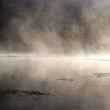
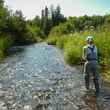
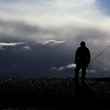
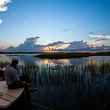



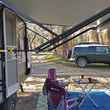
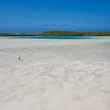



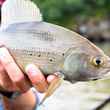




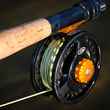




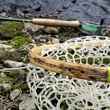
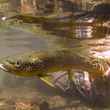


Comments
Danny P. replied on Permalink
Sorry to hear about the loss/change of your favorite creek. I was actually out fishing on my favorite creek on the south slope of the Uintas last year while the Pole Fire burned and the wind was blowing all the smoke that direction. It was the most uneasy feeling I've had while out fishing. Hopefully there can be some serious talks about the management of the deadfall fuel in our forests and how we can make a positive impact to prevent the abrupt loss of these ecosystems.
Clive Stott replied on Permalink
The problem was the fire was let to burn instead of extinguishing it with sufficient resources when it was small.
Foresters are over-riding our fire and health authorities because they are taught in forestry school "every day is a fire day". The love fire. They get paid more when a small fire develops into a campaign fire. Big fires make good TV news.
Fire creates a flammable landscape. The more you burn the more you will have to burn. Fires are even burning the same land two years after the last burn. This feedback loop plays right into the hands of current day foresters.
They used to be fire extinguishers but they aren't any more.
So what do we do? We mobilise an early response team with sufficient resources to put the fires out, we don't let them grow to an unmanageable size.
We don't plannedburn the forest build-up because that will promote more weed growth and more fire and they have been shown to escape boundaries and risk lives.
The safe 'burn season' has becomes so short now that authorities need to look at smokeless mechanical clearing. We need to see our foresters riding around on machines not wandering around with drip torches.
There are many advantages of mechanical clearing, eg you are not limited to a shortened, safe burn time. There is much less toxic smoke. It is cheaper than picking up the pieces after a large fire.
https://www.cleanairtas.com/departments/alternative-solutions.htm
Just the smoke (particulate pollution, PM2.5) alone from all this burning (natural and planned) has been classed by the WHO as a Class 1 carcinogen, the same as asbestos, formaldehyde and mustard gas to name a few nasties, Now you wouldn't breathe those would you so why breathe wood smoke from a deliberate planned burn/ prescribed burn, or a fire deliberately left to burn?
.
Fire should no longer be the preferred way of managing our landscape. There are proven alternatives. Foresters are not keeping up with climate science. They do not have a social licence to deliberately blacken our landscape or make smoke.
Pages